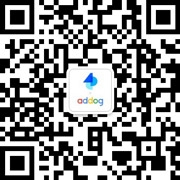
本案例默认翻译为中文,点击可切换回原语言
已切换成原语言,点击可翻译成中文
Nyt Vr
案例简介:概要 NYT VR 应用程序源于《泰晤士报》新闻编辑室、广告部门和品牌合作伙伴的共同愿景,将虚拟现实作为讲故事的主流形式。NYT VR 发布不仅让 VR 软件比以往任何时候都更受欢迎, 但它允许他们通过前所未有的向 130万《纽约时报》订户分发谷歌纸板耳机来全面参与这项技术。此外,该应用程序允许品牌和读者分享《泰晤士报》打破边界的故事讲述的悠久历史,将 NYT VR 置于一个新的互动媒体被证明成功的传统中。该应用程序为用户提供了一系列新奇而来之不易的虚拟现实体验。无论是在《流离失所者》和 Mini 的电影中看到的遥远的地方,还是通用电气从未见过的动画, 每部电影都在将虚拟现实引入主流中起着至关重要的作用。 结果 不出所料,NYT VR 产生了巨大的影响:-超过 500,000 次 NYT VR 应用的下载,这是 NYT 历史上最快的应用。 -NYT VR 内容浏览超过 150万次。 -平均 6 分钟的应用内参与时间。由于第一个项目的成功,另外 300,000 个耳机将被分发给特定的数字用户。自那以来,其他广告商已经分享了在纽约时报应用程序上运行的虚拟现实电影,包括温斯坦公司、汉莎航空公司和其他正在进行的公司。作为一个整体的执行看到了重要的主流媒体报道。通用电气的合作伙伴关系获得了 AdAge 2015年最佳品牌内容合作伙伴关系,并帮助 T Brand Studio 被评为 2015年广告周最热门的本地广告。 活动描述 虚拟现实和 360 视频在 NYT VR 推出之前就已经存在,但到目前为止,这种媒体提供的讲故事的潜力还没有进入主流。随着时代的悠久传统,推动新闻业的极限,将虚拟现实带到最前沿将确保不断变化的媒体景观继续创新,并接触到新的受众。为此,我们只看了一半以上的读者使用的与《纽约时报》内容互动的设备: 智能手机。我们没有要求我们的观众加入虚拟现实,而是将虚拟现实放在他们的指尖。但是为了给他们真正的虚拟现实体验,我们做了更多的事情: 通过利用《纽约时报》经济高效的分销网络,我们为 130万用户提供了谷歌纸板耳机。该应用程序与耳机相结合,让比以往任何时候都更多的观众真正体验虚拟现实的魔力。 执行 正如《泰晤士报》执行副总裁兼首席收入官梅雷迪思 · 科皮特 · 莱文所说, 具有讽刺意味的是,“它需要印刷报纸 -- 一个有 164 年历史的行业 -- 向有史以来最大的观众提供最先进的数字讲故事技术之一”。在可爱的团结中,传统报纸和谷歌纸板都是由相同的材料制成的。事实上,过去的创新为今天的进步奠定了基础,纽约时报虚拟现实的魔力在于现代智能手机的功能,以及应用程序利用它们的能力。运行在谷歌纸板耳机内的手机上,NYT VR 应用让观众沉浸在一个 360 的世界里,那里的可能性是无限的。“流离失所者” 将他们运送到国外,以经历儿童难民危机。迷你带他们进入了一部动作惊悚片的戏剧。通用电气将观众带到一个自然激发创新的世界。随着新电影不断加入 NYT VR 应用程序,探索的可能性才刚刚开始。在发布后的几天里,NYT VR 很快成为《纽约时报》采用最快的应用程序,到 4月,下载量超过 500,000 次,包括 150万多次浏览 NYT VR 内容。 战略 该项目是几个品牌联合推出 NYT VR 并交付 130万款谷歌纸板耳机的结果,这是有史以来最大的虚拟现实技术单一分销。拥有包括 C-suite 高管和技术爱好者在内的广泛读者群,观众非常适合与谷歌、迷你和通用电气的技术接触。品牌的对齐反映了这一前瞻性的目标。同时具有标志性和创新性的是,通用电气的数字方法希望引领行业走向技术未来,而 Mini 长期以来一直是一家具有前瞻性思维的城市汽车制造商。与此同时,谷歌仍然是 21世纪最具开创性和最重要的科技公司之一。这些品牌被《泰晤士报》讲故事的血统结合在一起,发现自己处于理想的位置,让 NYT VR 成为数百万渴望的观众的现实。
Nyt Vr
案例简介:Synopsis The NYT VR app grew out of the shared vision of The Times’ newsroom, its advertising department and brand partners to realize virtual reality as a mainstream form of storytelling. The NYT VR launch not only put VR software in the hands of a larger audience than ever before, but it allowed them to fully engage with the technology via an unprecedented distribution of Google Cardboard headsets to 1.3 million New York Times subscribers. What’s more, the app allowed brands and readers alike to share in The Times’ long history of boundary-breaking storytelling, placing NYT VR in a tradition of proven success with new and interactive mediums.The app gave users a range of novel and hard-earned VR experiences. Be it the far-flung locations seen in “The Displaced” and Mini’s films, or the never-before-seen animation of GE, each film played a vital role in ushering VR into the mainstream. Outcome As expected, the NYT VR had a tremendous impact:-Over 500,000 downloads of the NYT VR app, the fastest app adoption in NYT history.-NYT VR content viewed more than 1.5 million times.-An average of 6 minutes in-app engagement time.Due to the success of the first program, a further 300,000 headsets will be distributed to select digital-only subscribers.Additional advertisers that have since shared VR films to run on the NYT app include Weinstein Company, Lufthansa and others in progress. The execution as a whole saw significant mainstream press coverage. The GE partnership landed on AdAge’s Best Branded Content Partnerships of 2015, as well as helping T Brand Studio to be named Ad Week’s Hottest in Native Advertising in 2015. Campaign Description VR and 360 video existed before the launch of NYT VR, but until now the potential of storytelling the medium offers has failed to enter the mainstream. With The Times long tradition of pushing the limits of journalism, bringing VR to the forefront would ensure that the ever-shifting landscape of media continues to innovate and reach new audiences. To do this, we looked no further than the devices more than half of our readers use to engage with New York Times content: smartphones. Instead of asking our audience to come to VR, we put VR at their fingertips. But to give them the true VR experience we did something more: By leveraging The New York Times’ cost-effective distribution network, we supplied 1.3 million subscribers with Google Cardboard headsets. The app coupled with the headsets allowed a larger audience than ever before to truly experience the magic of VR. Execution As Times’ Executive Vice President and Chief Revenue Officer Meredith Kopit Levien remarked, it’s not without irony that “it takes the print newspaper—a 164-year old business—to deliver one of the most advanced digital storytelling technologies” to its largest audience ever. And in lovely unity, both the legacy newspaper and Google Cardboard are made of the same material. Indeed, past innovations set the stage for today’s advances, and the magic of NYT VR lies in the capabilities of modern smartphones, and the app’s ability to harness them. Running on phones placed inside Google Cardboard headsets, the NYT VR app immersed viewers in a 360 world, where the possibilities are truly endless. “The Displaced” transported them abroad to experience the child refugee crisis. Mini took them inside the drama of an action-thriller. And GE transported viewers to a world where nature inspires innovation. With new films continually joining the NYT VR app, the possibilities for exploration have only just begun. In the days following launch, NYT VR quickly became The New York Times most rapidly adopted app and by April had more than 500,000 downloads, including 1.5 million+ views of NYT VR content. Strategy The project is the result of the alliance between several brands to launch NYT VR and deliver 1.3 million Google Cardboard headsets — the largest ever single distribution of VR technology. With a wide-reaching readership that includes C-suite executives and tech enthusiasts, the audience was ideal to engage with technology from Google, Mini and GE. The alignment of brands is reflective of this forward-thinking goal. At once iconic and innovative, GE’s digital approach looks to lead industry into the technological future, while Mini has long established itself as a forward-thinking and urban automaker. Meanwhile, Google remains among the most pioneering and important technology companies of the 21st century. United by the storytelling pedigree of The Times, these brands found themselves ideally situated to make NYT VR a reality for an eager audience of millions.
Nyt Vr
案例简介:概要 NYT VR 应用程序源于《泰晤士报》新闻编辑室、广告部门和品牌合作伙伴的共同愿景,将虚拟现实作为讲故事的主流形式。NYT VR 发布不仅让 VR 软件比以往任何时候都更受欢迎, 但它允许他们通过前所未有的向 130万《纽约时报》订户分发谷歌纸板耳机来全面参与这项技术。此外,该应用程序允许品牌和读者分享《泰晤士报》打破边界的故事讲述的悠久历史,将 NYT VR 置于一个新的互动媒体被证明成功的传统中。该应用程序为用户提供了一系列新奇而来之不易的虚拟现实体验。无论是在《流离失所者》和 Mini 的电影中看到的遥远的地方,还是通用电气从未见过的动画, 每部电影都在将虚拟现实引入主流中起着至关重要的作用。 结果 不出所料,NYT VR 产生了巨大的影响:-超过 500,000 次 NYT VR 应用的下载,这是 NYT 历史上最快的应用。 -NYT VR 内容浏览超过 150万次。 -平均 6 分钟的应用内参与时间。由于第一个项目的成功,另外 300,000 个耳机将被分发给特定的数字用户。自那以来,其他广告商已经分享了在纽约时报应用程序上运行的虚拟现实电影,包括温斯坦公司、汉莎航空公司和其他正在进行的公司。作为一个整体的执行看到了重要的主流媒体报道。通用电气的合作伙伴关系获得了 AdAge 2015年最佳品牌内容合作伙伴关系,并帮助 T Brand Studio 被评为 2015年广告周最热门的本地广告。 活动描述 虚拟现实和 360 视频在 NYT VR 推出之前就已经存在,但到目前为止,这种媒体提供的讲故事的潜力还没有进入主流。随着时代的悠久传统,推动新闻业的极限,将虚拟现实带到最前沿将确保不断变化的媒体景观继续创新,并接触到新的受众。为此,我们只看了一半以上的读者使用的与《纽约时报》内容互动的设备: 智能手机。我们没有要求我们的观众加入虚拟现实,而是将虚拟现实放在他们的指尖。但是为了给他们真正的虚拟现实体验,我们做了更多的事情: 通过利用《纽约时报》经济高效的分销网络,我们为 130万用户提供了谷歌纸板耳机。该应用程序与耳机相结合,让比以往任何时候都更多的观众真正体验虚拟现实的魔力。 执行 正如《泰晤士报》执行副总裁兼首席收入官梅雷迪思 · 科皮特 · 莱文所说, 具有讽刺意味的是,“它需要印刷报纸 -- 一个有 164 年历史的行业 -- 向有史以来最大的观众提供最先进的数字讲故事技术之一”。在可爱的团结中,传统报纸和谷歌纸板都是由相同的材料制成的。事实上,过去的创新为今天的进步奠定了基础,纽约时报虚拟现实的魔力在于现代智能手机的功能,以及应用程序利用它们的能力。运行在谷歌纸板耳机内的手机上,NYT VR 应用让观众沉浸在一个 360 的世界里,那里的可能性是无限的。“流离失所者” 将他们运送到国外,以经历儿童难民危机。迷你带他们进入了一部动作惊悚片的戏剧。通用电气将观众带到一个自然激发创新的世界。随着新电影不断加入 NYT VR 应用程序,探索的可能性才刚刚开始。在发布后的几天里,NYT VR 很快成为《纽约时报》采用最快的应用程序,到 4月,下载量超过 500,000 次,包括 150万多次浏览 NYT VR 内容。 战略 该项目是几个品牌联合推出 NYT VR 并交付 130万款谷歌纸板耳机的结果,这是有史以来最大的虚拟现实技术单一分销。拥有包括 C-suite 高管和技术爱好者在内的广泛读者群,观众非常适合与谷歌、迷你和通用电气的技术接触。品牌的对齐反映了这一前瞻性的目标。同时具有标志性和创新性的是,通用电气的数字方法希望引领行业走向技术未来,而 Mini 长期以来一直是一家具有前瞻性思维的城市汽车制造商。与此同时,谷歌仍然是 21世纪最具开创性和最重要的科技公司之一。这些品牌被《泰晤士报》讲故事的血统结合在一起,发现自己处于理想的位置,让 NYT VR 成为数百万渴望的观众的现实。
Nyt Vr
案例简介:Synopsis The NYT VR app grew out of the shared vision of The Times’ newsroom, its advertising department and brand partners to realize virtual reality as a mainstream form of storytelling. The NYT VR launch not only put VR software in the hands of a larger audience than ever before, but it allowed them to fully engage with the technology via an unprecedented distribution of Google Cardboard headsets to 1.3 million New York Times subscribers. What’s more, the app allowed brands and readers alike to share in The Times’ long history of boundary-breaking storytelling, placing NYT VR in a tradition of proven success with new and interactive mediums.The app gave users a range of novel and hard-earned VR experiences. Be it the far-flung locations seen in “The Displaced” and Mini’s films, or the never-before-seen animation of GE, each film played a vital role in ushering VR into the mainstream. Outcome As expected, the NYT VR had a tremendous impact:-Over 500,000 downloads of the NYT VR app, the fastest app adoption in NYT history.-NYT VR content viewed more than 1.5 million times.-An average of 6 minutes in-app engagement time.Due to the success of the first program, a further 300,000 headsets will be distributed to select digital-only subscribers.Additional advertisers that have since shared VR films to run on the NYT app include Weinstein Company, Lufthansa and others in progress. The execution as a whole saw significant mainstream press coverage. The GE partnership landed on AdAge’s Best Branded Content Partnerships of 2015, as well as helping T Brand Studio to be named Ad Week’s Hottest in Native Advertising in 2015. Campaign Description VR and 360 video existed before the launch of NYT VR, but until now the potential of storytelling the medium offers has failed to enter the mainstream. With The Times long tradition of pushing the limits of journalism, bringing VR to the forefront would ensure that the ever-shifting landscape of media continues to innovate and reach new audiences. To do this, we looked no further than the devices more than half of our readers use to engage with New York Times content: smartphones. Instead of asking our audience to come to VR, we put VR at their fingertips. But to give them the true VR experience we did something more: By leveraging The New York Times’ cost-effective distribution network, we supplied 1.3 million subscribers with Google Cardboard headsets. The app coupled with the headsets allowed a larger audience than ever before to truly experience the magic of VR. Execution As Times’ Executive Vice President and Chief Revenue Officer Meredith Kopit Levien remarked, it’s not without irony that “it takes the print newspaper—a 164-year old business—to deliver one of the most advanced digital storytelling technologies” to its largest audience ever. And in lovely unity, both the legacy newspaper and Google Cardboard are made of the same material. Indeed, past innovations set the stage for today’s advances, and the magic of NYT VR lies in the capabilities of modern smartphones, and the app’s ability to harness them. Running on phones placed inside Google Cardboard headsets, the NYT VR app immersed viewers in a 360 world, where the possibilities are truly endless. “The Displaced” transported them abroad to experience the child refugee crisis. Mini took them inside the drama of an action-thriller. And GE transported viewers to a world where nature inspires innovation. With new films continually joining the NYT VR app, the possibilities for exploration have only just begun. In the days following launch, NYT VR quickly became The New York Times most rapidly adopted app and by April had more than 500,000 downloads, including 1.5 million+ views of NYT VR content. Strategy The project is the result of the alliance between several brands to launch NYT VR and deliver 1.3 million Google Cardboard headsets — the largest ever single distribution of VR technology. With a wide-reaching readership that includes C-suite executives and tech enthusiasts, the audience was ideal to engage with technology from Google, Mini and GE. The alignment of brands is reflective of this forward-thinking goal. At once iconic and innovative, GE’s digital approach looks to lead industry into the technological future, while Mini has long established itself as a forward-thinking and urban automaker. Meanwhile, Google remains among the most pioneering and important technology companies of the 21st century. United by the storytelling pedigree of The Times, these brands found themselves ideally situated to make NYT VR a reality for an eager audience of millions.
Nyt Vr
暂无简介
Nyt Vr
暂无简介
基本信息
暂无评分
已有{{caseInfo.tatolPeople}}人评分
创作者
案例详情
涵盖全球100万精选案例,涉及2800个行业,包含63000个品牌
热门节日97个,23个维度智能搜索
-

项目比稿
品类案例按时间展现,借鉴同品牌策略,比稿提案轻松中标
-

创意策划
任意搜索品牌关键词,脑洞创意策划1秒呈现
-

竞品调研
一键搜索竞品往年广告,一眼掌握对手市场定位
-

行业研究
热词查看洞悉爆点,抢占行业趋势红利
登录后查看全部案例信息
如果您是本案的创作者或参与者 可对信息进行完善







